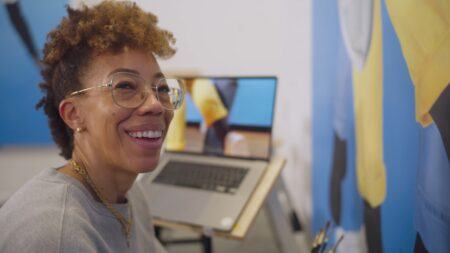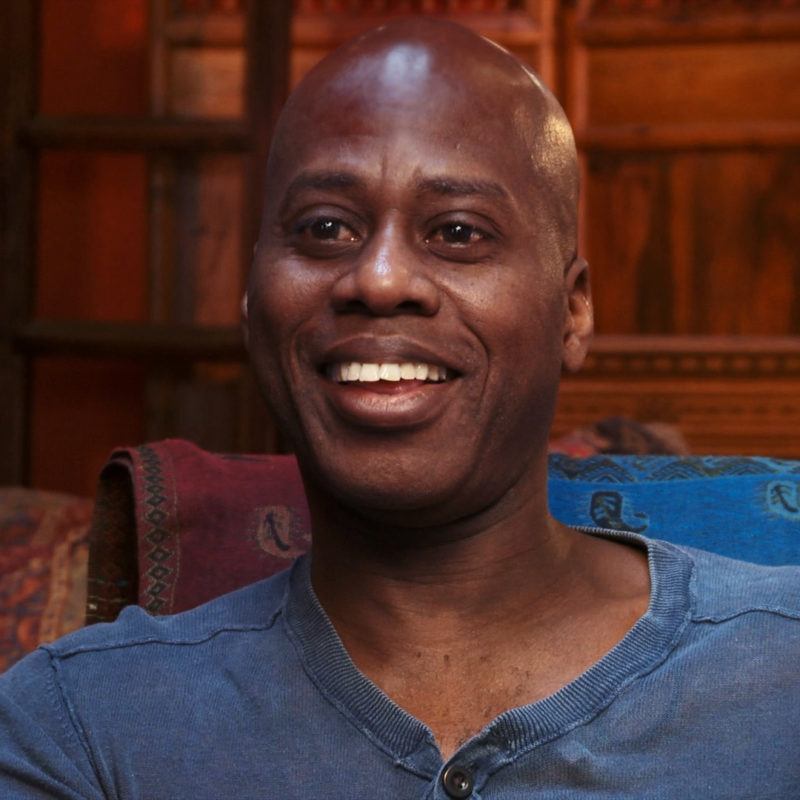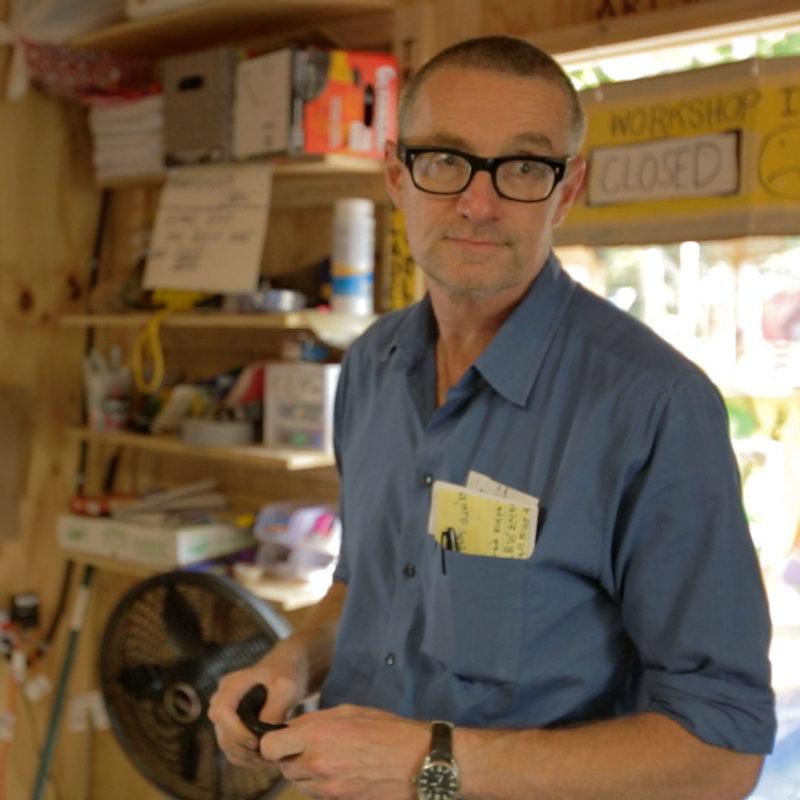Continue playing
(Time remaining: )
Play from beginning
Continue playing "{{ controller.videos[controller.getVideo(controller.currentVideo)].segmentParentTitle}}"
{{controller.videos[controller.getVideo(controller.currentVideo)].title}} has ended.
Investigation
How do artists push beyond what they already know and readily see? Can acts of engagement and exploration be works of art in themselves?
In this episode, artists use their practices as tools for personal and intellectual discovery, simultaneously documenting and producing new realities in the process.
More information and creditsCredits
Series Created By: Susan Dowling & Susan Sollins. Executive Producer & Curator: Susan Sollins. Series Producer: Eve Moros Ortega. Associate Curator: Wesley Miller. Director of Production: Nick Ravich. Field Producer: Ian Forster. Editor: Lizzie Donahue. Director of Photography: Joel Shapiro. Additional Photography: David Howe, Nicholas Lindner, John Marton, Michael Miles, Rafael Salazar, Miguel Sanchez-Martin, Ian Serfontein, & Andrew David Watson. Sound: Tom Bergin, Eric Diebner, Richard Gin, Agnès Jammal, Judy Karp, Jodi Levine, Mark Mandler, Andy Paddon, Mauricio Rodriguez, & John Zecca. Assistant Camera: Alejandro Munoz.
Art Direction & Design: Open, New York. Online Editor: Don Wyllie. Composer: Peter Foley. Voiceover Artist: Jace Alexander, Dale Soules, & Joe Urla. Sound Mix: Cory Melious. Sound Edit: Matt Snedecor. Graphics Animation: CRUX Design. Artwork Animation: Stephanie Andreou. Assistant Editor: Carla Naranjo, Danny Rivera, Leana Siochi, Elizabeth J. Theis, & Bahron Thomas.
Artworks Courtesy of: Leonardo Drew; Thomas Hirschhorn; Graciela Iturbide; Barbara Gladstone Gallery, New York; Sikkema Jenkins & Co., New York; Stephen Friedman Gallery, London; & Vigo Gallery, London.
Special Thanks: The Art21 Board of Trustees; Tanya Barson; Janet Bethea; Scott Briscoe; Lex Brown; Jeral Crichlow; Dia Art Foundation; Harry Drake; Erik Farmer; Framerunner; Frida Kahlo Museum; Forest Houses; Dominique Harrison; Heard City; Barbara Jenkins; Curtis Jones; Faye Jones; Dannion Jordan; Romain Lopez; Michael Morrisey; New York City Housing Authority; Marcella Paradise; Paulina Pardo; Pat Casteel Transcripts; Claudia Pretelin; Yasmil Raymond; Rocha Iturbide Family; Stanley Scott; Susie Shaw; Richard Stamats; Tate Modern; Clyde Thompson Jr.; & Freddy Velez.
Additional Art21 Staff: Cristiana Baik, Nicole J. Caruth, KC Forcier, Joe Fusaro, Jessica Hamlin, Jonathan Munar, Alexis Patterson, Heather Reyes, Diane Vivona, & Nechama Winston.
Public Relations: CaraMar Publicity. Station Relations: De Shields Associates, Inc. Legal Counsel: Albert Gottesman.
In Memoriam: Susan Sollins, visionary creator of Art21 and Art in the Twenty-First Century.
Major underwriting for Season 7 of Art in the Twenty-First Century is provided by National Endowment for the Arts, PBS, Agnes Gund, Bloomberg, The Andy Warhol Foundation for the Visual Arts, The Horace W. Goldsmith Foundation, The Robert Sterling Clark Foundation, The Anna-Maria and Stephen Kellen Foundation, Toby Devan Lewis, and Sikkema Jenkins & Co.
Closed captionsAvailable in English, German, Romanian, Italian, Japanese, Korean, Chinese, Italian
Through the Art21 Translation Project, multilingual audiences from around the globe can contribute translations, making Art21 films more accessible worldwide.
Interested in showing this film in an exhibition or public screening? To license this video please visit Licensing & Reproduction.
Graciela Iturbide’s interest lies in what her eyes see and what her heart feels—what moves her and touches her. Although she has produced studies of landscapes and culture in India, Italy, and the Unites States, her principal concern has been the exploration and investigation of Mexico—her own cultural environment—through black-and-white photographs of landscapes and their inhabitants, abstract compositions, and self-portraits. Her images of Mexico’s indigenous people—the Zapotec, Mixtec, and Seri—are poignant studies of lives within the bounds of traditional ways of life, now confronted by the contemporary world.
Although often mistaken for accumulations of found objects, Leonardo Drew’s sculptures are instead made of “brand new stuff”—materials such as wood, rusted iron, cotton, paper, and mud—that he intentionally subjects to processes of weathering, burning, oxidation, and decay. Whether jutting out from a wall or traversing rooms as freestanding installations, his pieces challenge the architecture of the space in which they’re shown. Never content with work that comes easily, Drew constantly reaches beyond “what’s comfortable” and charts a course of daily investigation, never knowing what the work will be about but letting it find its way, and asking, “What if….”
Thomas Hirschhorn shapes public discourse that relates to political discontent, and offers alternative models for thinking and being. Believing that every person has an innate understanding of art, Hirschhorn resists exclusionary and elitist aesthetic criteria—for example, quality—in favor of dynamic principles of energy and coexistence. He creates sprawling installations from mundane materials (packing tape, cardboard, foil) that engage the senses. Using collage as a form of interpretation and critique, Hirschhorn presents intellectual history and philosophical theory much as he does everyday objects and images, and poses questions about aesthetic value, moral responsibility, political agency, consumerism, and media spectacle.
“There is the artwork that you physically make, but there’s also the journey that happens on the inside.”
Leonardo Drew



